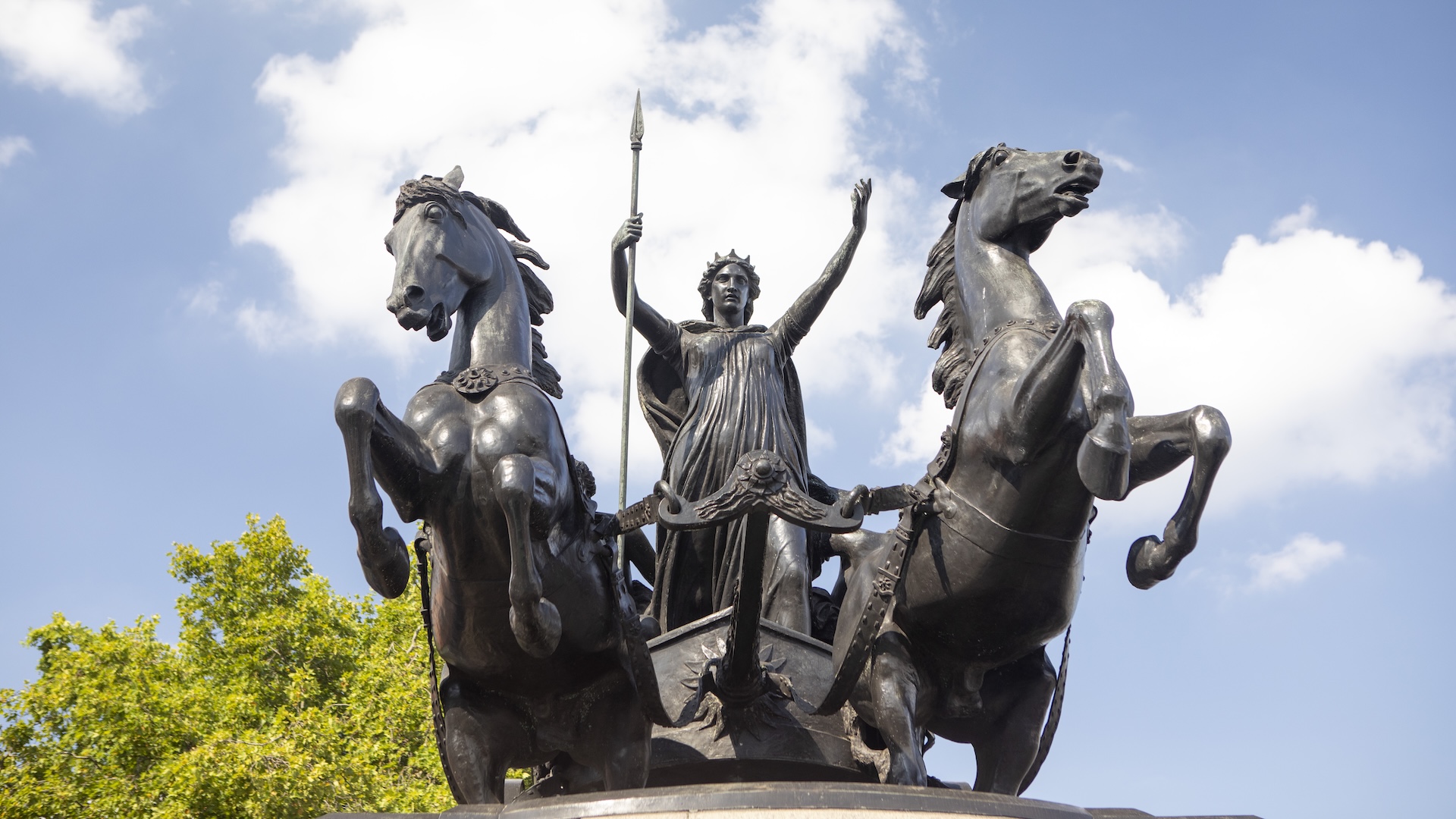By Tom Metcalfe
Copyright livescience

Skip to main content
Close main menu
Live Science
Sign up to our newsletter
View Profile
Search Live Science
Planet Earth
Archaeology
Physics & Math
Human Behavior
Science news
Life’s Little Mysteries
Science quizzes
Newsletters
Story archive
COVID vaccine poll
‘Halo’ barrels off Los Angeles
Interstellar comet 3I/ATLAS is turning green
Stephen Hawking’s black hole theory finally confirmed
Visible time crystal created
Don’t miss these
Archaeology
3,000-year-old burial of elite teen unearthed in Iran, with gold jewelry and astonishing ‘scorpion’ cosmetics box
Viking Age woman was buried with her dog in an elaborate ‘boat grave,’ excavations reveal
Archaeology
2,100-year-old skeleton of warrior nicknamed ‘Lord of Sakar,’ buried in a stunning gold wreath, unearthed in Bulgaria
Roman army camp found in Netherlands, beyond the empire’s frontier
Archaeology
50 amazing facial reconstructions, from Stone Age shamans to King Tut
Ancient Egyptians
We finally know why Queen Hatshepsut’s statues were destroyed in ancient Egypt
Archaeology
‘God-king’ born from incest in ancient Ireland wasn’t a god or a king, new study finds
Archaeology
2,200-year-old Celtic settlement discovered in Czech Republic — and it’s awash in gold and silver coins
Archaeology
Pristine Etruscan tomb discovered in Italy contains more than 100 untouched artifacts
Archaeology
1,300-year-old skeletons found in England had grandparents from sub-Saharan Africa, DNA studies reveal
Viking Age burial of chieftain with ‘enormous power’ found in Denmark — and he may have served Harald Bluetooth
‘Puzzling’ bronze discs adorned with lion heads discovered in Roman-era grave
Ancient Egyptians
2,200-year-old gold coin depicting ancient Egyptian queen discovered in Jerusalem
‘World’s most difficult jigsaw puzzle’: Archaeologists piece together thousands of shattered fresco blocks from ancient Roman villa
Archaeologists discover 1,800-year-old Roman watchtower built to protect the empire during Marcus Aurelius’ reign
Archaeology
Where is Queen Boudica buried?
Tom Metcalfe
15 September 2025
The remains of Britain’s national heroine — Queen Boudica of the Iceni tribe — are not under a train station in north London. So, where is her grave?
When you purchase through links on our site, we may earn an affiliate commission. Here’s how it works.
Queen Boudica died defending her people from Roman rule in the first century A.D. But where is she buried?
(Image credit: Peter Carruthers via Getty Images)
Nearly 2,000 years ago, the queen of a Celtic tribe in Britain led a bloody revolt against the Romans. Queen Boudica, a ruler of the Iceni tribe of Celtic Britons in the first century A.D., challenged the Roman occupiers and was later celebrated as a British national heroine.
But where was Boudica (also spelled Boudicca, Boadicea or Boudecia) buried? Over the years, several locations were said to have been her burial place, including beneath a platform in one of London’s busiest train stations.
Boudica “was very, very pro-British, and very much a freedom fighter,” Miranda Aldhouse-Green, a professor emerita of archaeology at Cardiff University in the U.K. and the author of “Boudica Britannia” (Routledge, 2021), told Live Science.
You may like
3,000-year-old burial of elite teen unearthed in Iran, with gold jewelry and astonishing ‘scorpion’ cosmetics box
Viking Age woman was buried with her dog in an elaborate ‘boat grave,’ excavations reveal
2,100-year-old skeleton of warrior nicknamed ‘Lord of Sakar,’ buried in a stunning gold wreath, unearthed in Bulgaria
Her conflict with the Romans originated in about A.D. 60, after they brutally denied joint rulership of the Iceni to her daughters and Boudica resolved to free the whole island from Roman rule.
“She decided that she was going to get an army together and push the Romans out of Britain, which she very nearly did,” Aldhouse-Green said.
Related: Did Roman gladiators really fight to the death?
Clash of cultures
Boudica was the wife of the Iceni ruler Prasutagus, a wealthy client king of the Romans, who ruled lands on Britain’s east coast until his death in about A.D. 60. According to historical records, his will left partial rulership of the Iceni tribe to his two daughters, whose names are unrecorded. The rule of the rest of his territories was to go to the Romans, who had successfully invaded Britain in about A.D. 43.
Sign up for our newsletter
Sign up for our weekly Life’s Little Mysteries newsletter to get the latest mysteries before they appear online.
But under Roman law, women were forbidden from inheriting any type of rule, although it is unclear if Boudica or her daughters were Roman citizens, Caitlin Gillespie, a classical historian at Brandeis University in Massachusetts and the author of “Boudica: Warrior Woman of Roman Britain” (Oxford University Press, 2018), told Live Science.
This clash of cultures, and perhaps raw politics, led the Romans to deny the claim that Boudica’s daughters could rule any part of the Iceni lands. And they were brutal in their denial. “There was sort of a muck-up with the Romans, who treated Boudica very badly,” Aldhouse-Green said. “They came storming in, confiscated all the assets, flogged Boudica, and raped her two daughters.”
After that, “Boudica decided that was it,” Aldhouse-Green said, and she established a rebel army with her own people and Britons from other tribes who had also been treated badly by the Romans.
You may like
3,000-year-old burial of elite teen unearthed in Iran, with gold jewelry and astonishing ‘scorpion’ cosmetics box
Viking Age woman was buried with her dog in an elaborate ‘boat grave,’ excavations reveal
2,100-year-old skeleton of warrior nicknamed ‘Lord of Sakar,’ buried in a stunning gold wreath, unearthed in Bulgaria
An illustration of Queen Boudica leading Indigenous troops into battle against the Romans in circa A.D. 60. (Image credit: Science History Images via Alamy)
Boudican revolt
The Boudican revolt lasted for several months and caused the destruction of several important Roman settlements in Britain, including their capital, Camulodunum (Colchester in Essex), and the town of Londinium (now London). But it ultimately failed, and Boudica’s rebellious forces were defeated in A.D. 61 at the Battle of Watling Street, a later name for the ancient road that led northwest from Londinium.
Boudica herself either died in the battle or took her own life when it was clear that she had lost. Despite her defeat, she was later fêted as a national heroine, especially during the reign of Queen Victoria, and she is often conflated with Britannia, the nation’s mythical warrior queen.
The idea that Boudica was buried beneath what’s now a platform at London’s King’s Cross train station seems to have originated in the 19th century. The station was built in an area called Battle Bridge, and according to legend, Boudica had been defeated there. But historians now think the name “Battle Bridge” was a corruption of “Broadford Bridge” and that it had nothing to do with Boudica. The idea gained strength with the discovery of Roman-era remains at the site when the station was built in the 1850s, but there is nothing to suggest Boudica was ever buried there.
A painting depicting the tumult of Queen Boudica’s forces attacking and burning the Roman city of Londinium in circa A.D. 60. (Image credit: Heritage Images via Getty Images)
Rumors of Boudica’s burial place abounded in the 19th century, due in part to her symbolic association with Britain’s Queen Victoria. Some speculated she was buried beneath Parliament Hill on the southeastern side of Hampstead Heath, which loomed prominently in the north of early London near the southern end of Watling Street. (Historians now think, however, that the battle happened hundreds of miles north along the same road, perhaps in Warwickshire.)
RELATED MYSTERIES
—Where is Alexander the Great’s tomb?
—Where is Attila the Hun’s tomb?
—Where is the tomb of Genghis Khan?
Other antiquarians and writers, eager to connect Boudica to significant landmarks, proposed she had been buried at Stonehenge (already thousands of years old by Boudica’s time), while others suggested she might have been buried in one of the many Iron Age tombs in southern Britain, especially in what had been the Iceni territories in the East.
But Aldhouse-Green cautioned that Boudica’s grave, wherever it is, will probably never be found.
“The Romans decided when she died that they would prevent any kind of memorial, because they were afraid that it would be a rallying point for rebellion,” she said. “So they made absolutely certain that there was nothing to show where she was buried.”
Roman Britain quiz: What do you know about the Empire’s conquest of the British Isles?
Life’s Little Mysteries
Tom Metcalfe
Social Links Navigation
Live Science Contributor
Tom Metcalfe is a freelance journalist and regular Live Science contributor who is based in London in the United Kingdom. Tom writes mainly about science, space, archaeology, the Earth and the oceans. He has also written for the BBC, NBC News, National Geographic, Scientific American, Air & Space, and many others.
You must confirm your public display name before commenting
Please logout and then login again, you will then be prompted to enter your display name.
3,000-year-old burial of elite teen unearthed in Iran, with gold jewelry and astonishing ‘scorpion’ cosmetics box
Viking Age woman was buried with her dog in an elaborate ‘boat grave,’ excavations reveal
2,100-year-old skeleton of warrior nicknamed ‘Lord of Sakar,’ buried in a stunning gold wreath, unearthed in Bulgaria
Roman army camp found in Netherlands, beyond the empire’s frontier
50 amazing facial reconstructions, from Stone Age shamans to King Tut
We finally know why Queen Hatshepsut’s statues were destroyed in ancient Egypt
Latest in Archaeology
3,300-year-old ancient Egyptian whistle was likely used by police officer tasked with guarding the ‘sacred location’ of the royal tomb
350-year-old mummified head from Bolivia isn’t what it seems
New reconstructions show piercing eyes of men who lived 2,500 years ago in mysterious Indian civilization
‘Extraordinary’ Roman helmet from war-ending battle found in the sea off Sicily
Kneeling Bull: A 5,000-year-old hybrid creature from Iran with a mysterious purpose
2,200-year-old gold coin depicting ancient Egyptian queen discovered in Jerusalem
Latest in Features
Science history: Gravitational waves detected, proving Einstein right — Sept. 14, 2015
James Webb telescope’s ‘starlit mountaintop’ could be the observatory’s best image yet — Space photo of the week
Where is Queen Boudica buried?
Camera trap in Chile detects strange lights blazing through the wilderness. Researchers are scrambling to explain them.
Where could alien life exist in our solar system?
Why do AI chatbots use so much energy?
LATEST ARTICLES
AI could use online images as a backdoor into your computer, alarming new study suggests
‘Your fear is well-founded’: How human activities have raised the risk of tick-borne diseases like Lyme
Chinese scientists hunt for alien radio signals in ‘potentially habitable’ TRAPPIST-1 system
James Webb telescope’s ‘starlit mountaintop’ could be the observatory’s best image yet — Space photo of the week
Science history: Gravitational waves detected, proving Einstein right — Sept. 14, 2015
Live Science is part of Future US Inc, an international media group and leading digital publisher. Visit our corporate site.
Contact Future’s experts
Terms and conditions
Privacy policy
Cookies policy
Accessibility Statement
Advertise with us
Web notifications
Editorial standards
How to pitch a story to us
Future US, Inc. Full 7th Floor, 130 West 42nd Street,
Please login or signup to comment
Please wait…



